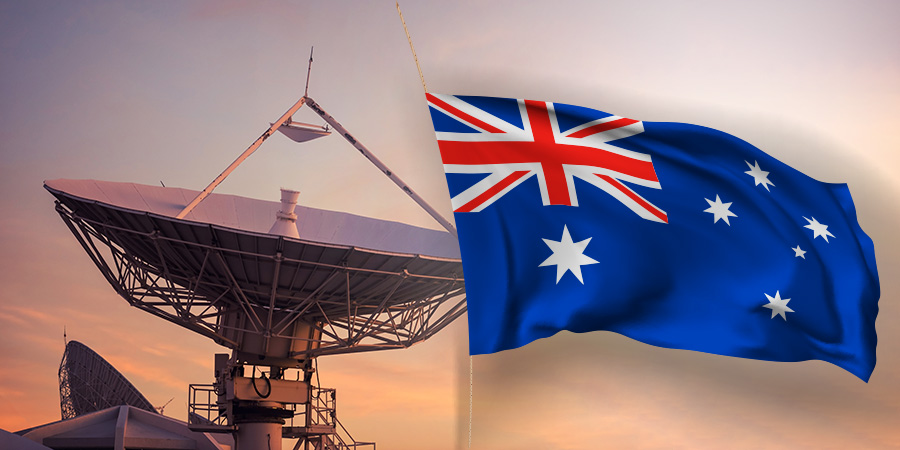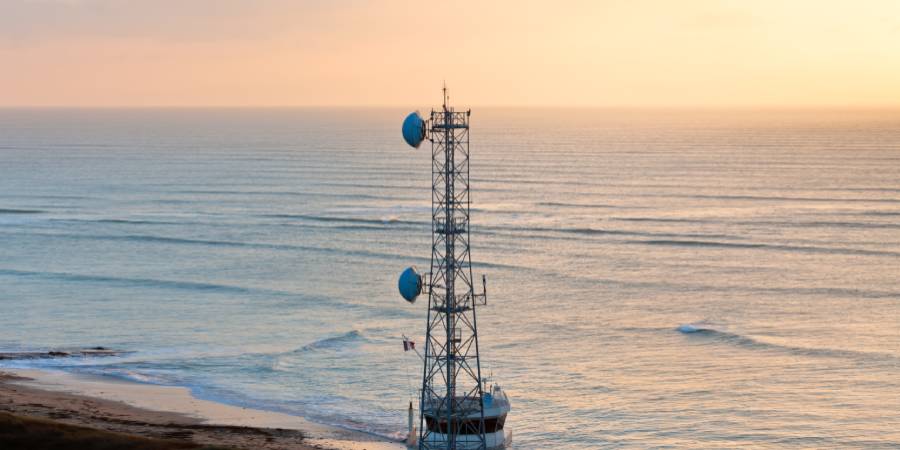
By Geoff Bennett, Director of Solutions & Technology, Infinera
Submarine cable systems provide a vital communication pathway between continents. According to analyst firm Telegeography, there are 487 of these cables operating around the world today. Each cable is unique – some are simple, unrepeatered cables, while others stretch across the oceans for over 10,000 kilometers. But there are certain factors that determine the performance of any cable, as measured by two crucial metrics – the maximum wavelength data rate and the total transmission capacity of each fiber pair.

Figure 1: Performance factors and history of submarine cable evolution
The biggest performance factor is, of course, the cable itself. As you would expect, newer cables have much higher performance than older cables. But it can take many years to plan, approve, and deploy a new cable, and once deployed, they have an engineering lifetime of at least 25 years. This means that the vast majority of those 487 cables are inevitably going to be “older cables.”
Assuming the cable is already in service, what can we do to enhance its performance and extend its viable commercial life? This comes down to the choice of submarine transponders – the devices that actually put the information into the cable itself.
Record-breaking performance

Figure 2: Summary of MAREA’s record-breaking performance
A modern fifth-generation coherent transponder is capable of transmitting up to 800 Gb/s on each wavelength while carrying up to 12 bits in each symbol for extremely high spectral efficiency, which in turn means higher fiber capacity. But these are for relatively short distances – in the case of Infinera’s ICE6, reach could be up to 1,600 km at 800 Gb/s using Corning TXF fiber, or up to 1,000 km using the most popular type of fiber, G.652. These are extremely impressive reach numbers for 800 Gb/s transmission – up to 10 times further than the previous two transponder generations at their respective maximum data rates.
But what about in a submarine cable? The cable that I like to think of as the “Nurburg Ring” of subsea cables – in other words, the cable that every transponder vendor wants to test their highest-performing equipment on – is the MAREA trans-Atlantic cable. MAREA uses extremely high-quality optical fiber and was designed with unusually short repeater spacing in order to deliver the best possible transmission environment for modern coherent transponders.
Infinera’s previous generation of optical engine, ICE4, holds the record for published fiber pair production capacity on MAREA at 24 Tb/s. But earlier this year, we showed that ICE6 could increase that to 28 Tb/s, which is within 2 dB of the theoretical maximum for this cable. ICE was also able to deliver a per-wavelength production data rate of 650 Gb/s over MAREA, which is another record. You may feel that 650 is an unusual number, since it does not align with service data rates (e.g., 100 GbE, 400 GbE). But ICE6 has two wavelengths per module and the capacity can be pooled to deliver 1.3 Tb/s of capacity, which could be used to support, for example, 13 x 100 GbE services.
Transponder performance factors: Variable baud rates
How has ICE6 achieved this incredible performance? Fifth-generation transponders based on the latest 7-nm ASIC technology have certainly exceeded industry expectations, but ICE6 has a few unique capabilities that make it the highest-performing fifth-generation transponder.
First is the rate at which ICE6 transmits data symbols, referred to as the baud rate. By increasing the baud rate to almost 100 billion symbols per second (100 GBd), with each symbol carrying around 10 bits, we can deliver a full 800 Gb/s data rate, plus the overhead of the framing and the forward error correction. High baud rates are a key enabler for high wavelength data rates, and a future trend will be to increase them even more – perhaps as high as 150 GBd in sixth-generation coherent.
However, when it comes to using high baud rate signals in submarine cables, the problem is that these signals are very wide – the spectral width of a signal is proportional to the baud rate. It works well for parts of the cable spectrum, but the reason that ICE6 can deliver so much more capacity than other fifth-generation technologies on MAREA is our ability to vary the baud rate, manipulate the width of the optical signal, and squeeze channels into available spaces. Variable baud rate also allows us to “monetize the margin” that a technology with a fixed baud rate would leave in the cable.
Transponder performance factors: Non-PCS modulations
Probabilistic constellation shaping (PCS) has made a staggering contribution to fifth-generation transponder performance. PCS is a highly sophisticated, highly granular modulation technique that allows us to tune the spectral efficiency of an optical wavelength to move capacity very close to the theoretical limit.
In most terrestrial and subsea cables, PCS is the preferred modulation. But as we see more and more real-world deployments with ICE6, we have found that it is possible to achieve up to 25% more capacity using non-PCS modulations over very long dispersion-managed cables, which is a key advantage since there are so many dispersion-managed cables around the world today.
Summary
Modern cables have significantly higher performance than older cables, but it could take five to seven years for a new cable to reach its ready-for-service status. Therefore, it is vital to be able to maximize the capacity of existing cables in order to extend their commercial lifetime.
Fixed high baud rate and PCS-only implementations leave a significant amount of margin in the cable, so an implementation that supports variable baud rates and non-PCS modulations enables margin monetization and extended commercial lifetimes.
For more information, please visit Infinera.com.







